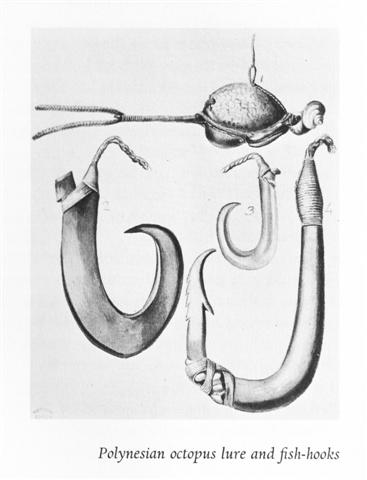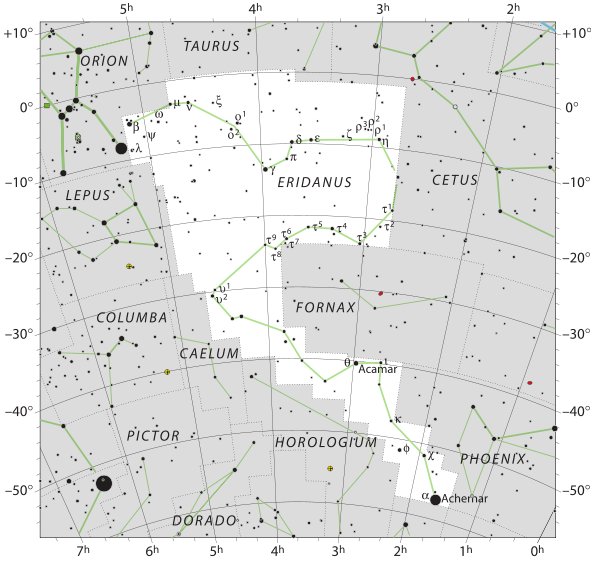I am thus suggesting there was an intended correspondence
between the missing number 55 in the sequence of
Makoi stations and the first day of
the Pleiades:
|
1
Ko Apina Iti |
27 |
29
Ko Te Rano A Raraku |
23 |
54
Vai Rapa |
(55) |
4 |
60
Apina Nui |
|
29 |
24 |
5 |
|
58 |
| te
ua |
koia ra |
kua tuku ki to mata - ki tona tukuga |
e
kiore - henua -
pa rei |
|
Ko. 1.
Article (ko te); preposition:
with (see grammar); prefix of
personal pronouns: koau, I;
kokoe, you (singular); koîa, he, she, it;
kokorua,
you (plural); ko tagi, koîa, he with his weeping. 2. Article
which precedes proper nouns, often
also used with place names: Ko
Tori, Ko Hotu Matu'a, Ko Pú. Koîa, exact:
tita'a koîa, exact demarcation. Seems to be the
personal pronoun koîa -
applied in the meaning of: thus it
is, here it is precisely. Vanaga. 1.
Negative; e ko, not, except;
e ko ora, incurable; ina
ko, not; ina ko tikea,
unseen; ina e ko, not; ina
e ko mou, incessant. 2. A
particle used before nouns and
pronouns; ko vau, I; ko te,
this; ko mea tera, this; ati ko peka, to avenge,
ko
mua, first, at first, formerly.
3. There, yonder. P Mgv.: ko,
over there, yonder. Ta.: ó,
there, here. Churchill.
Ta.:
ra,
a day.
Pa.
1. Mgv.: pa, an
inclosure, a fenced place. Ta.:
pa, inclosure, fortification.
Mq.: pa, inclosure. Sa.:
pa, a wall. Ma.: pa, a
fort. 2. Mgv.: pa, to touch.
Sa.: pa'i, id. Ma.: pa,
id. 3. Mgv.: pa, to prattle.
Ta.: hakapapa, to recount. 4.
Mq.: pa, a hook in bonito
fishing. Sa.: pa, a
pearlshell fishhook. Ma.: pa,
a fishhook. Pau.: hakapa, to
feel, to touch. Mgv.: akapa,
to feel, to touch, to handle
cautiously.  |
 |
 |
 |
 |
|
Cb2-4
(420 = 7 * 60) |
Cb2-5 (29) |
Cb2-6 |
Cb2-7 |
|
CLOSE TO THE SUN: |
|
Nov 13
κ
Librae (237.2),
ι
Serpentis (237.4),
ψ²
Lupi,
ρ
Oct.
(237.5), γ Cor. Borealis, η Librae
(237.7),
COR
SERPENTIS = α Serpentis
(237.9)
*196.0 = *237.4 - *41.4 |
14
π
Cor. Borealis,
UNUK ELHAIA (Necks of the Serpents)
= λ
Serpentis
(238.1),
CHOW =
β
Serpentis
(238.6) |
15
κ
Serpentis (239.3),
δ
Cor. Borealis,
TIĀNRŪ =
μ
Serpentis
(239.5),
χ
Lupi, (239.6),
ω
Serpentis (239.7),
BA (= Pa) =
ε
Serpentis,
χ
Herculis (239.8).
κ
Cor.
Borealis, ρ Serpentis (239.9) |
16 (320)
λ
Librae (240.0),
β
Tr. Austr. (240.3),
κ
Tr. Austr. (240.4),
ρ
Scorpii (240.8)
*199.0 = *240.4 - *41.4 |
|
'Oct 17 |
18 |
19 (292 = 4 * 73) |
20 |
|
"Oct 3 |
4 (277) |
5 |
6 |
|
SEPT 10 |
11 |
12 (255 = 3 * 85) |
13 |
|
DAY 237 |
238 |
239 |
240 |
|
CLOSE TO THE FULL MOON: |
|
May 14
δ Persei (54.7) |
15 (500 = 365 + 135)
Al Thurayya-27 (Many Little Ones) /
Krittikā-3 (Nurses of Kārttikeya) /
TAU-ONO (Six Stones)
ATIKS =
ο
Persei, RANA (Frog) =
δ
Eridani
(55.1),
CELAENO (16 Tauri), ELECTRA (17),
TAYGETA (19),
ν
Persei (55.3),
MAIA (20), ASTEROPE (21), MEROPE
(23)
(55.6) |
16 (136)
Hairy Head-18 (Cockerel) /
Temennu-3 (Foundation Stone)
ALCYONE
(56.1),
PLEIONE (28 Tauri),
ATLAS (27 Tauri)
(56.3) |
17
MENKHIB (Next to the Pleiades =
ζ
Persei
(57.6)
PORRIMA (γ Virginis) |
|
'April 17 (80 + 27) |
18 (108
= 135 - 27) |
19 |
20 |
|
BISSEXTUM (54 - 55) |
56 (8 WEEKS) |
57 (= 137 - 64 - 16) |
|
... The leap day was introduced as
part of the Julian reform. The day
following the Terminalia (February
23) was doubled, forming the 'bis
sextum - literally 'double
sixth', since February 24 was 'the
sixth day before the Kalends of
March' using Roman inclusive
counting (March 1 was the 'first
day'). Although exceptions exist,
the first day of the bis sextum
(February 24) was usually regarded
as the intercalated or 'bissextile'
day since the third century.
February 29 came to be regarded as
the leap day when the Roman system
of numbering days was replaced by
sequential numbering in the late
Middle Ages ... |
|
"April 3
|
4 |
5 |
6 (96) |
|
MARCH 11 |
12 (135 - 64 = 71) |
13 |
14 (→ π) |
|
DAY 54 |
55 |
56 |
57 |
|
54 Vai Rapa |
- |
56 (Sic!) Vai Rutu Manu |
57
Hanga Piko |
|
54
vai rapa a
hakaremereme |
56 te vai rutu
manu a koro rupa.e haho e hivi e
e runga e
te puku
ohu kahi e. |
57
hanga piko a
hare rutu manu a
ana onoono
a
Pu ngotangota. |
|
According to Barthel
the 'shimmering water' (vai rapa)
was located north of Ana Kai
Tangata (Cave for Eating Man)
with Hanga Piko (Curved Bay)
a bit further north. In between was
Te Vai Rutu Manu:
... The 'watering place' where the
bird beats (the rhythm)' - wordplay,
'where a certain chant is being
recited' - is located near Hanga
Piko. A recitation provides the
following information for the
additional name: 'In Koro Rupa is
the house where one is made to
laugh; in Kere Mea is the house
where one is made fun of' (Barthel
1960:851; Campbell 1971:400). There
the rule of the new birdman was
celebrated (compare koro
'feast'). In RAP., koro rupa
seems to have the same meaning as in
TUA. kororupo, which
describes a paradise. In the
cosmology of the TUA., the name also
referred to the entrance to the
underworld. Hivi (maybe the
same as hi ivi 'to fish with
a hook made from bone'; compare the
narrative ME:363) is 'outside', and
'the elevation from where (the catch
of) the tunafish is announced' is
'above'. This is a reference to a
large boulder beside the place where
the canoes docked in Hanga Piko.
There the people waited for the
canoes to return from the fishing
grounds." (The Eighth Land,
pp. 89-90.)
Kahi. Tuna; two sorts:
kahi aveave, kahi matamata.
Vanaga. Mgv.: kahi, to run,
to flow. Mq.: kahi, id.
Churchill. Rangitokona, prop
up the heaven! // Rangitokona,
prop up the morning! // The pillar
stands in the empty space. The
thought [memea] stands in the
earth-world - // Thought stands also
in the sky. The kahi stands
in the earth-world - // Kahi
stands also in the sky. The pillar
stands, the pillar - // It ever
stands, the pillar of the sky.
(Morriori creation myth according to
Legends of the South Seas.)
Puku. 1. To feel an urge
to defecate or to urinate, etc.:
ku-puku-á te mimi: to need to
urinate. 2. Rock, boulder: puku
ma'ea; puku oone,
hillock, earth mound. 3. Puku
tagata, pubis. Puku-ine,
to get stuck in the oesophagus (of
food). Pukupuku, joints,
bones of a joint; pukupuku rima,
wrist bones; pukupuku va'e,
ankle. Pukuraga, followers,
disciples, students. Puku
rekoreko is the juicy part
between two knots (puku).
Vanaga. 1. Puku haga oao,
east, east wind. 2. Pubes. T Mgv.:
puku, clitoris; pukuhou,
the age of puberty; pukutea,
a man between 30 and 45. 3. Unripe;
puku no, unripe; pukupuku,
green, immature. Mgv. puku,
to be unripe. Mq.: puku, a
fruit which has not yet reached its
maturity. 4. To gorge; mahaga
puku, to take the bait greedily.
PS Sa.: pu'u, to take the
whole at one mouthful, to put into
the mouth whole. Fu.: pukupuku,
to rinse the mouth, to gargle. Niuē:
puku,
to take into the mouth.
Pukuhina,
(puku
4), to choke on a fishbone. Pau.:
pukua,
to choke with a fishbone. Mgv.:
pukua,
to be suffocated by anything that
sticks in the throat. Mq.:
pukua,
bad deglutition. Ta.:
puunena,
puufeto,
to choke, to gag. Ha.:
puua,
to be choked, to have something
sticking in the throat.
Pukupuku;
1. Elbow. G. 2. Wrinkled, knotty,
wen, scrofula; gao
pukupuku,
scrofula. T Pau.: puku,
a swelling; pukupuku,
a wrinkle, knotty, rough. Mgv.:
puku,
a knot in the wood;
pukupuku,
knotted, rough, uneven, lumpy. Mq.:
puku,
knot in wood, boss, protuberance,
tumor, boil; toopuku,
toopuu, boil, wart, tumor;
pukupuku,
wrinkled, knotty. Ta.: puú,
boss, protuberance, swelling;
puúnono,
tumour; puúpuú,
wrinkled, knotty. Pukuraga,
servant T. Churchill. Rei
matapuku, necklace made of coral
or of mother-of-pearl. Henry.
Ohua.
Night in the Moon calendar:
 |
 |
 |
|
Ohua |
Otua |
|
CLOSE TO THE SUN: |
|
12h (182.6) |
ALCHITA |
PÁLIDA |
|
DAY 182 |
183 |
184 |
|
CLOSE TO THE FULL MOON: |
|
March 20 |
SIRRAH |
ALGENIB PEGASI |
|
DAY 364 |
0h (365.25) |
1 |
This 'bird beating
the rhythm' was mentioned also at
the item for Hanga Piko, in
the house (hare) of the cave
(ana) 'SixSix' (onoono).
"Ana Onoono is a cave well-suited as
an overnight shelter; Pu Ngotangota
is a coastal formation where the
seawater is allowed to flow in and
out. The three additions, 'house',
'cave', and 'hole', always describe
an enclosed area." (Barthel, a.a., p
90)
Clearly Ana
Onoono may have been referred
to earlier in Manuscript E, when
they carried the severely injured
Kuukuu down into a cave and
piled up 6 stone heaps outside who
would answer when he called out → 6
heaps for 6 men → 36(0).
Likewise can we
perceive a correspondence between
the coastal formation Pu Ngotangota,
where water freely flowed in and
out, and the movements of the
explorers when they 'behaved like
turtles', when they rode the waves
repeatedly towards the beach.
'Turtle' → boat (cfr Zaurak).
... po-tagotago, darkness.
po o te tagata, life ... |
|
Niu |
moe te goe |
|
Niu. Palm tree,
coconut tree; hua niu,
coconut. Vanaga. Coconut, palm,
spinning top. P Pau., Ta.:
niu, coconut. Mgv.:
niu, a top;
niu mea, coconut.
Mq.:
niu, coconut, a top.
Churchill. The fruit of
miro. Buck. T. 1.
Coconut palm. 2. Sign for peace.
Henry. The sense of top lies in
the fact that the bud end of a
coconut shell is used for
spinning, both in the sport of
children and as a means of
applying to island life the
practical side of the doctrine
of chances. Thus it may be that
in New Zealand, in latitudes
higher than are grateful to the
coconut, the divination sense
has persisted even to different
implements whereby the
arbitrament of fate may be
declared. Churchill 2.
Goe.
Milky Way. Vanaga. |
 |
 |
 |
|
Cb2-8 (424 = 392 + 32) |
Cb2-9 |
Cb2-10 |
|
CLOSE TO THE FULL MOON: |
|
May 18
ZAURAK (The Boat) = γ Eridani
(58.9) |
19
λ Tauri (59.3), ν Tauri (59.9) |
20 (140)
4h (60.9)
JĪSHUĬ (Piled-up Waters) = λ
Persei
(60.7)
COR
CAROLI (α Canum Ven.)
|
 |
|
DAY 58 |
59 |
60 |
|
58
Ata Popohanga |
59
Ata Ahiahi |
60
Apina Nui |
|
58 ata
Popohanga toou e to ata hero e |
59 ata ahiahi
toou e honu e |
60 apina nui
a Papa nihoniho a vere nua-
nua a Papa o
rae i te ngao o te moai o hina-
riru. |
|
Barthel: 'Yours
is the morning shadow' refers to
an area in Ata Hero where the
house of Ricardo Hero is now
located. 'Yours is the evening
shadow' belongs to a 'turtle'. I
could not obtain any information
about the location, but I
suspect that the 'turtle' refers
to a motif in the narration of
Tuki Hakahevari (the turtle is
carved in stone in a cave along
the bay of Apina) ... |
.jpg)
|